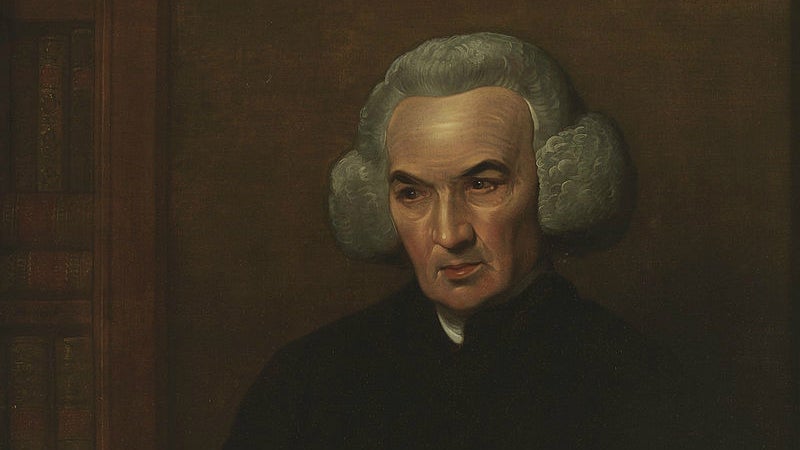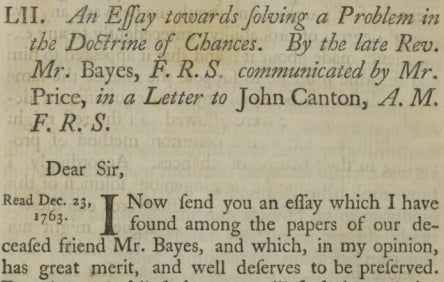The most important formula in data science was first used to prove the existence of God
The 18th-century minister and mathematician Richard Price is mostly forgotten to history. His close friend Thomas Bayes, also a minister and math nerd, is much better known, at least in statistics circles. Bayes’ fame is deserved. He developed one of the most important formulas in statistics, which has proven crucial to the fields of data science, machine learning, and artificial intelligence.


The 18th-century minister and mathematician Richard Price is mostly forgotten to history. His close friend Thomas Bayes, also a minister and math nerd, is much better known, at least in statistics circles. Bayes’ fame is deserved. He developed one of the most important formulas in statistics, which has proven crucial to the fields of data science, machine learning, and artificial intelligence.
Bayes’ formula helps scientists assess the probability that something is true based on new data. For example, doctors can use the result of a mammogram exam, which is sometimes wrong, to assess whether they should revise their assessment that a patient has breast cancer. The formula shows that the degree of change depends on the accuracy of the test.
Bayes’ theorem would eventually become a big deal in statistics, but he wouldn’t live to see it rise to prominence. When Bayes died in 1761, Price was asked go through his papers and decide if there was anything worthy of publication. Price found the formula in Bayes’ An Essay towards solving a Problem in the Doctrine of Chances, and published it in 1763. Price also added an introduction and examples: Bayes was apparently uninterested in applications.

Price’s interest in the formula wasn’t motivated purely by mathematics. He may have seen Bayes’ theorem as a means to prove the existence of God, according to accounts from the statistical historian Stephen Stigler (pdf) and computer scientist and philosopher Judea Pearl.
In 1748, philosopher David Hume published Of Miracles. In the essay, Hume argues that when someone claims to have seen a miracle, this is poor evidence it actually happened, since it goes against what we see every day.
Stigler quotes Hume, explaining, “No testimony is sufficient to establish a miracle, unless the testimony be of such a kind, that its falsehood would be more miraculous than the fact which it endeavors to establish.” Although Hume never said it directly, his essay was generally understood as an argument against Christianity.
As a believer in the miracle of Jesus’s resurrection, Price took exception. He believed Bayes’ formula proved it wrong. In a 1767 essay, Price shows that even if a person observes that the tide has come in a million times, on statistical grounds they cannot reasonably say it will never stop coming in. Using Bayes’ theorem, based on those million observations, Price calculated that there is a 50% chance the true probability of the tide not coming in one day is somewhere between 1 in 600,000 and 1 in 3 million. Therefore, he argued, it is not possible to eliminate the chance of a miracle based on a large number of negative observations.
Although Hume never disavowed his argument, he took Price’s rejoinder seriously. “I own to you, that the Light, in which you have put this Controversy, is new and plausible and ingenious, and perhaps solid,” Hume wrote to Price. (Capitalization worked a little differently back in those days.)
Although it hasn’t proved the existence of God, Bayes’ theorem has proved useful in other ways. In the The Book of Why, Judea Pearl points out that the formula is now used for testing new medicines, weather forecasting, and improving mobile-phone reception. It has also been central to the latest developments in artificial intelligence. We have Richard Price, the first Bayesian, to thank for sharing it with the world.